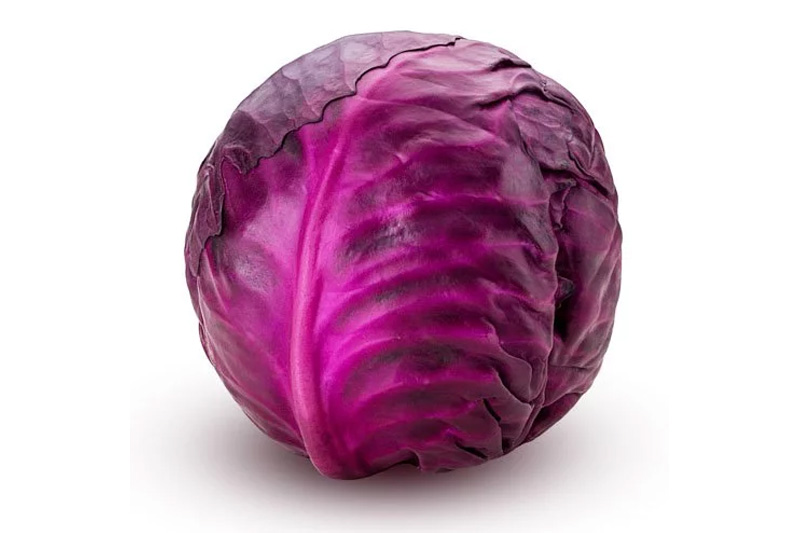Growing Red Cabbage in Containers. In a short space, you may grow a fibre-rich, healthy, and low-calorie vegetable that can be prepared for a great dinner or put directly into salads! It grows nicely in containers and is also enjoyable to grow!
Growing Red Cabbage in Containers

1. Choosing a Container Growing Red Cabbage in Containers
A 10-12 inches broad and deep pot is a fantastic choice for growing cabbages. Only one cabbage plant will thrive in a single container, as additional cabbage will result in smaller heads. The pot should also have proper drainage. Choose larger containers if you want to grow more cabbages in a single pot.
2. Planting Time
When it comes to planting, choose a variety that is appropriate for the season and environment of your location. Plant them whenever the temperature is between 50 and 85 degrees Fahrenheit if you live in a frost-free climate (10-30 C). The optimal temperature during maturation is around 60-70 F. (15-20 C). This guarantees that the flavour and growth are optimal!
Warmer places (USDA zones 9-11) can sow seeds in the fall and continue to sow them through the winter. Sowing seeds in milder climates should be done from early spring to summer. This will help you to enjoy a plentiful harvest in summer or fall!
3. Propagation
From Seeds:
- Fill a large tray halfway with seed starting mix or potting soil.
- Sprinkle the seeds on the soil and wrap them with a thin layer of potting mix.
- Water evenly but do not overwater the soil.
- Place the tray in an area that receives 2-3 hours of direct sunlight per day. Germination requires a temperature range of 68-75 degrees Fahrenheit (20-24 C). It will take between 7 and 15 days.
- After 4-6 weeks of germination, transplant the seedlings when they are 3-4 inches tall and have 3-4 sets of true leaves.
From Transplants:
- Fill a pot halfway with well-draining soil.
- Make a 2-inch hole in the centre of the container, carefully place the seedling inside, and tap the soil around it.
- Maintain the wetness of the soil by watering at regular intervals.
- Give the seedlings 4-6 hours of direct sunlight. Avoid placing the plant in full shadow as it can slow down its growth.
- Cabbage heads reach maturity in 60 to 105 days on average. This may differ based on the kind you’re cultivating.
4. Location
Do not position the container in a shady spot, as it will slow down the growth of the plant. Adequate sunshine is required if you are searching for huge heads. Six or more hours of direct sunlight a day will do wonders for the cabbage growth! If the sunshine in your area is intense, you can also grow cabbage in partial sunlight.
5. Soil to Growing Red Cabbage in Containers
You must be careful with the soil when growing cabbages. A high-quality, light potting mix that is high in humus and slightly clayey will help it grow tremendously! Cabbages grow best in damp soil, so choosing a substrate that maintains some moisture, but also drains well, is always a good choice. Adding 1/4 part peat moss or coco peat in the potting mix is going to seal the deal! You can also use homemade potting soil, the recipes are here!
6. Watering to Growing Red Cabbage in Containers
Watering cabbages consistently is the key, as they require moist soil to thrive effectively. Make certain that the soil is never allowed to dry up while the seedling is maturing. The best technique is to inspect the dirt with your finger. Water the plant if it is 1 inch dry. Overwatering stifles its growth and must be avoided.
7. Fertilizer
A monthly application of balanced liquid organic fertiliser is sufficient for optimal growth. You can also use 10-5-5 fertiliser or go for a diluted solution of fish emulsion, once every 2 weeks. If you are looking for more organic options, compost tea does well in improving the nutritional levels of the soil.
8. Mulching
Mulching aids in the preservation of moisture and temperature. It also keeps the plant from splitting even if it is subjected to dryness or overwatering. Remember that enough watering prevents split heads in cabbages.
9. Pests and Diseases
Cabbage pests include cabbageworm, aphids, root maggots, and cabbage loopers. A strong trickle of water will suffice to keep them safe. Cabbages can be affected by diseases such as clubroot, purple blotch, and black speck. They can be controlled by raising the pH of the soil with lime. To avoid purple blotch, avoid watering the foliage.
How to Harvest and Store Cabbage?
- Using a sharp knife, chop the cabbage heads. Take care not to injure the plants’ roots in the process.
- Cutting 1-2 inches above the root level is always a good idea. Keep 2-3 outer leaves to protect the edible portion from harm.
- Cabbage tastes best when it is fresh. Cut and eat them right away.
- They will keep for 1-2 days at room temperature. Keep them in the refrigerator for extended storage. This will keep them fresh for 1-2 weeks.
